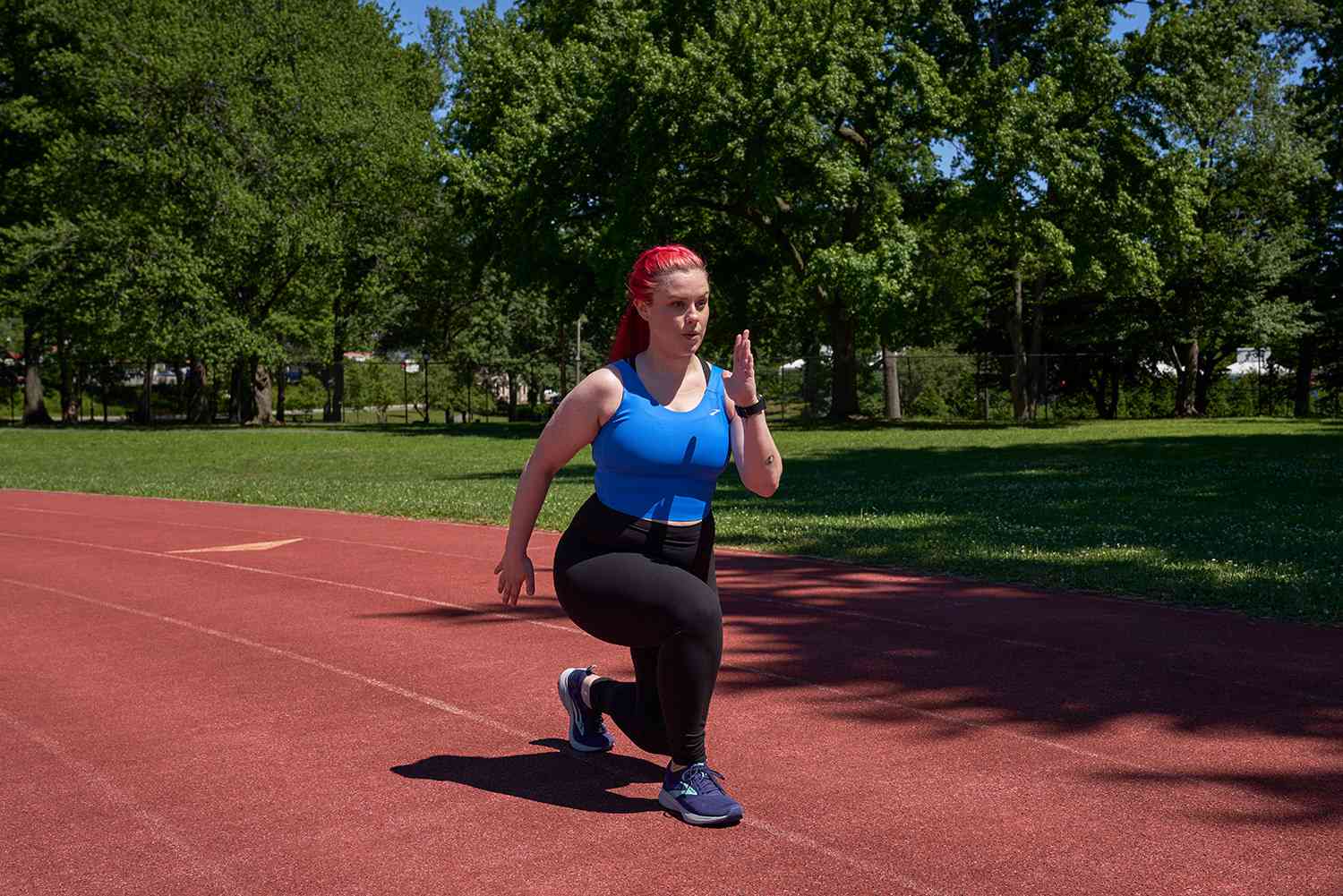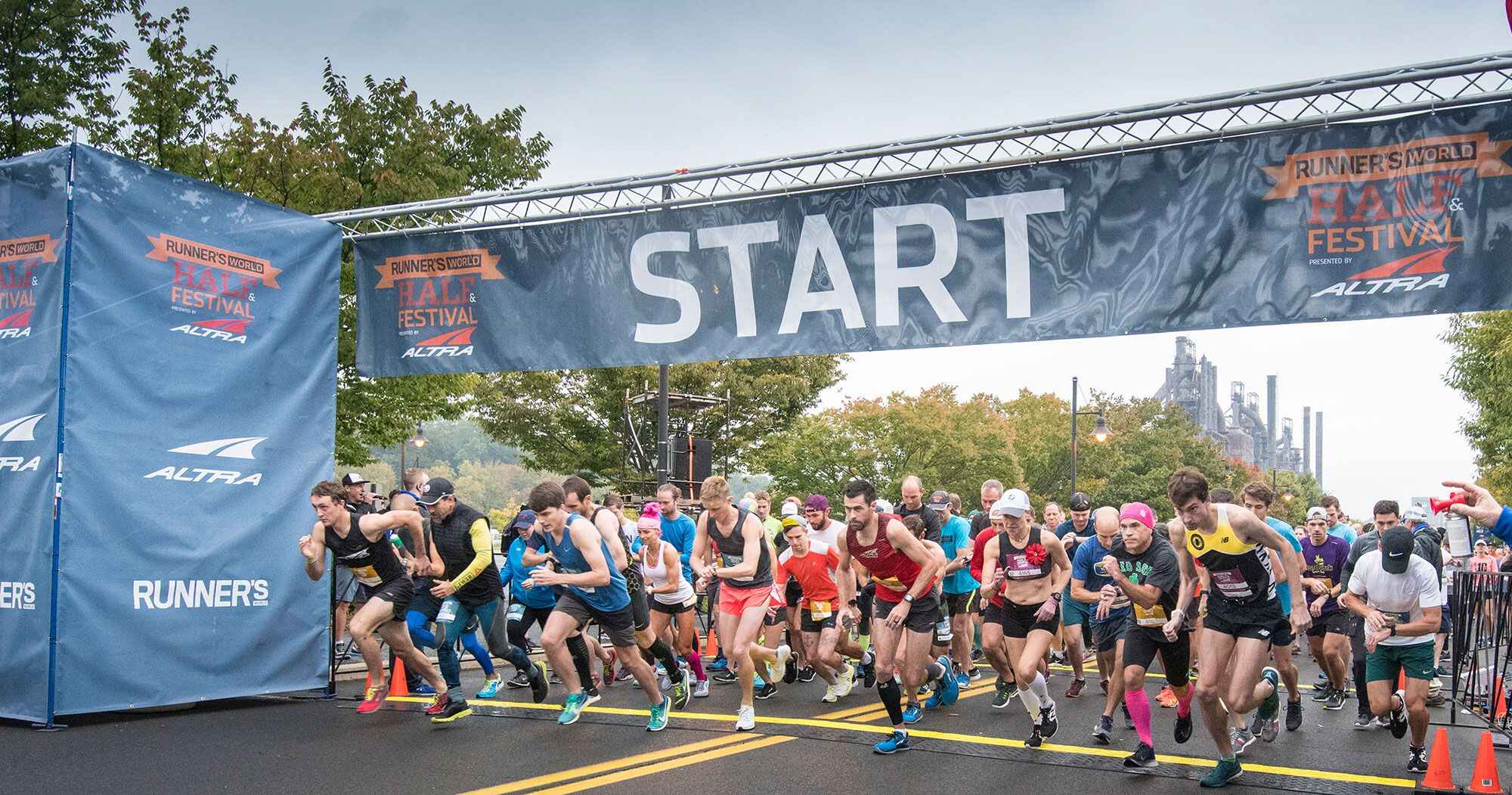

Featured
How To Improve Distance Running Times
Modified: January 22, 2024
Learn the best tips and techniques to improve your distance running times. Get featured in top marathons and achieve your personal records!
Introduction
Welcome to our comprehensive guide on how to improve your distance running times! Whether you’re a seasoned runner looking to set a new personal record or a beginner hoping to finish your first marathon, this article will provide you with valuable insights and strategies to help you achieve your goals.
Running long distances can be both mentally and physically challenging. It requires discipline, dedication, and a solid training plan. By implementing the right techniques and practices, you can optimize your performance and reach new milestones.
In this guide, we will explore various factors that can contribute to enhancing your distance running times. From setting appropriate goals and gradually increasing mileage to incorporating speed workouts and strength training, we will cover it all.
Additionally, we will delve into the importance of proper running form, the benefits of cross-training, the significance of rest and recovery, and the role of a balanced diet in fueling your runs. Consistency is another key aspect that we will emphasize throughout this article.
By following our expert tips and advice, you’ll be on your way to becoming a stronger, faster, and more efficient distance runner. So, let’s lace up those running shoes and start improving your running times!
Set Appropriate Goals
Setting appropriate goals is a crucial first step in improving your distance running times. Having clear and realistic objectives will not only keep you motivated but also provide a roadmap for your training.
When setting your goals, consider both short-term and long-term aspirations. Short-term goals can be specific to a particular race or time frame, while long-term goals can be more ambitious, such as achieving a personal best in a marathon.
It’s important to make your goals challenging yet attainable. Setting unrealistic goals can lead to frustration and burnout. Start by evaluating your current fitness level and past race performances. This will help you establish a baseline and identify areas for improvement.
Once you have determined your goals, break them down into smaller milestones. This will make your journey more manageable and allow you to track your progress along the way. For example, if your ultimate goal is to complete a marathon in under four hours, you could set a milestone of running a half marathon in under two hours within a specific timeframe.
Remember to be flexible with your goals as factors like weather conditions or injuries can impact your performance. Adjusting your goals when necessary will help you stay motivated and maintain a positive mindset.
Lastly, be sure to celebrate your achievements along the way. Recognizing your progress, whether it’s shaving off seconds from your mile time or completing a new distance, will further fuel your motivation and commitment to your running goals.
Increase Mileage Gradually
One of the keys to improving your distance running times is gradually increasing your mileage. Increasing your weekly mileage too quickly can increase the risk of injury and lead to burnout. Therefore, it’s important to follow a structured and progressive approach.
Start by assessing your current mileage and setting a baseline. If you’re a beginner, begin with a comfortable distance that you can consistently run multiple times per week, such as 3 to 5 miles. For more experienced runners, your baseline mileage will depend on your current fitness level.
Once you have established a baseline, aim to increase your weekly mileage by no more than 10% to 20% per week. This gradual increase allows your body to adapt and prevents overuse injuries. For example, if you’re running 10 miles per week, add an additional 1 to 2 miles the following week.
It’s also important to incorporate rest days into your training schedule. Rest days allow your body to recover and adapt to the increased stress. Use these rest days for active recovery, such as light stretching or low-impact activities like yoga or swimming.
Another effective strategy is to include a long run in your weekly training routine. The long run builds endurance and mental toughness, preparing you for the demands of a distance race. Start with a comfortable distance, such as 6 to 8 miles, and gradually increase the distance each week. Aim to complete your longest run a few weeks before the race to allow for proper tapering.
Listen to your body throughout this process. If you experience excessive fatigue, persistent muscle soreness, or any pain, it may be a sign that you’re pushing yourself too hard. Take a step back, reassess your training plan, and make adjustments as needed.
By gradually increasing your mileage and allowing for recovery, you’ll build a solid aerobic base and improve your endurance for longer distance running. Remember, consistency is key, so stick to your training plan and trust the process.
Focus on Speed Workouts
In addition to increasing your mileage, incorporating speed workouts into your training regimen is essential for improving your distance running times. Speed workouts help to increase your anaerobic capacity, enhance running economy, and improve overall race pace.
There are various types of speed workouts you can incorporate into your training, such as interval training, tempo runs, and fartleks. Interval training involves alternating between high-intensity running and recovery periods. For example, you could do a set of 400-meter sprints followed by a brief walking or jogging recovery. Tempo runs involve running at a comfortably hard pace for a sustained period, usually about 20 to 30 minutes. Fartleks are unstructured speed workouts where you vary your pace throughout a run, alternating between periods of higher intensity and lower intensity.
When including speed workouts in your training routine, it’s important to warm up properly to prepare your muscles and joints for the increased demands. A dynamic warm-up that includes exercises such as leg swings, high knees, and butt kicks can help loosen up your muscles and improve flexibility.
As with any training, it’s crucial to listen to your body and gradually progress. Start with shorter speed workouts and gradually increase the duration and intensity as your fitness improves. Incorporating speed workouts into your training schedule once or twice a week, with adequate rest days in between, will yield optimal results.
Remember to maintain good form and technique during your speed workouts. Focus on maintaining a relaxed and efficient stride, engaging your core, and swinging your arms in a controlled manner. Practicing good form will not only help you run faster but also reduce the risk of injury.
Lastly, don’t forget to cool down and stretch after your speed workouts. This will help prevent muscle tightness and aid in the recovery process. Perform static stretches that target the major muscle groups used during your workout, holding each stretch for 20 to 30 seconds.
By incorporating regular speed workouts into your training routine, you’ll improve your running speed and efficiency, resulting in faster distance running times. Remember to tailor your workouts to your current fitness level and gradually progress to avoid overexertion or injury.
Incorporate Strength Training
When it comes to improving distance running times, don’t overlook the importance of strength training. Strength training plays a crucial role in enhancing running performance, preventing injuries, and improving overall running efficiency.
Engaging in regular strength training exercises helps to strengthen the muscles, tendons, and ligaments that support your running stride. Stronger muscles can generate more power and stability, leading to improved running economy and reduced fatigue.
Focus on exercises that target the major muscle groups used in running, such as the quadriceps, hamstrings, glutes, calves, and core muscles. Some effective exercises include squats, lunges, deadlifts, hip thrusts, calf raises, and planks.
It’s recommended to incorporate strength training into your routine 2 to 3 times per week. Begin with lighter weights or bodyweight exercises and gradually increase the resistance as you become stronger and more comfortable with the movements.
In addition to traditional strength training exercises, plyometric exercises can also be beneficial for distance runners. Plyometrics involve explosive movements that help improve power and muscular elasticity. Examples of plyometric exercises include box jumps, jump squats, and bounds.
Proper form and technique are paramount when performing strength training exercises. Focus on maintaining a neutral spine, engaging the correct muscles, and using controlled movements. If you’re new to strength training, consider working with a qualified trainer to learn proper technique and prevent injury.
Don’t forget to allow for adequate recovery between strength training sessions. Your muscles need time to repair and grow stronger. Ensure that you’re fueling your body with proper nutrition and getting enough rest and sleep to support muscle recovery and adaptation.
By incorporating strength training into your training regimen, you’ll not only become a stronger and more resilient runner but also improve your running economy and endurance. Remember to start gradually, pay attention to proper form, and be consistent with your strength training routine.
Improve Running Form
Improving your running form is an often overlooked but essential aspect of enhancing your distance running times. Having proper running form can help you run more efficiently, reduce the risk of injuries, and optimize your overall performance.
One key element of good running form is maintaining an upright posture. Stand tall with your head aligned with your spine, shoulders relaxed, and core engaged. Avoid slouching or leaning forward, as this can lead to unnecessary strain on your muscles.
Another important aspect is your foot strike. Aim to land midfoot or slightly towards the front of your foot, rather than heavily striking the ground with your heels. This promotes a more natural and efficient stride, reducing the risk of injuries like shin splints and knee pain.
Focus on maintaining a quick turnover rate, or cadence, with shorter, quicker strides. This helps to increase your running efficiency and reduces the impact on your joints. Aim for a cadence of around 180 steps per minute.
It’s essential to avoid overstriding, which occurs when your foot lands too far ahead of your body. Overstriding can lead to braking forces and decrease your running efficiency. Instead, focus on landing your foot slightly underneath your body, with your knee slightly bent upon impact.
Engage your core muscles by activating your abdominal and lower back muscles. A strong core provides stability and improves overall running form. Practice incorporating exercises that target your core, such as planks, Russian twists, and bicycle crunches, into your regular workout routine.
Additionally, pay attention to your arm swing. Your arms should be relaxed and swinging in a controlled manner, not crossing over the midline of your body. The movement of your arms should be coordinated with your leg movements, driving your momentum forward.
To improve your running form, consider filming yourself running or seek the guidance of a running coach or physiotherapist. They can assess your form and provide personalized feedback and exercises to help you make necessary adjustments.
Remember, improving your running form takes time and practice. Be patient and gradually implement changes, focusing on one aspect at a time. Consistency is key, so incorporate drills and exercises that reinforce proper form into your training routine regularly.
By focusing on improving your running form, you’ll become a more efficient, injury-resistant runner, ultimately leading to improved distance running times.
Implement Cross-Training
When it comes to improving distance running times, cross-training is a valuable tool that should not be overlooked. Cross-training involves engaging in activities other than running to complement your training and improve overall fitness.
One major benefit of cross-training is that it allows you to work different muscle groups and prevent overuse injuries that can occur from solely running. By incorporating activities such as swimming, cycling, or yoga into your routine, you can improve muscular balance, flexibility, and overall cardiovascular fitness.
Swimming is a low-impact activity that provides a full-body workout and helps to build cardiovascular endurance. Cycling is another excellent cross-training option, which targets different muscles and provides aerobic conditioning without placing excessive stress on the joints.
Yoga or Pilates are beneficial for improving flexibility, core strength, and balance, enhancing your overall running performance. These practices also promote relaxation, mental focus, and stress reduction, which can contribute to improved endurance and mental resilience during long-distance runs.
When implementing cross-training, ensure that you maintain a balance between your running workouts and cross-training activities. Schedule cross-training sessions on days when you would normally have easy or rest days from running. Avoid overdoing it and listen to your body, allowing for adequate recovery between hard training sessions.
It’s important to choose cross-training activities that complement your running goals while avoiding excessive impact or strain on your body. Incorporating activities that provide similar aerobic benefits and work different muscle groups than running will help to improve your overall fitness and prevent boredom in your training routine.
Add variety to your cross-training routine by exploring different activities such as hiking, rowing, or dance classes. These activities not only provide physical benefits but also help to keep your workouts fun and engaging.
Remember to pay attention to your nutrition and hydration needs during cross-training. While the intensity may vary compared to running, you still need to fuel your body properly to support your training and recovery.
Incorporating cross-training into your routine can enhance your overall fitness, reduce the risk of injuries, and add diversity to your training program. By working different muscle groups and improving your overall cardiovascular fitness, you’ll be well on your way to improving your distance running times.
Prioritize Rest and Recovery
When it comes to improving your distance running times, one often overlooked aspect is the importance of rest and recovery. Many runners fall into the trap of thinking that more is better, pushing themselves to the limit without allowing their bodies the time they need to recover.
Prioritizing rest and recovery is crucial for several reasons. Firstly, it allows your body to repair and rebuild muscle tissues that have been broken down during your training. This adaptation process is what ultimately leads to improvements in strength, endurance, and overall performance.
When planning your training schedule, make sure to incorporate rest days to give your body a break from the physical stress of running. Rest days allow your muscles, joints, and tendons to recover and reduce the risk of overuse injuries. Aim for at least one or two rest days per week, depending on your fitness level and training intensity.
In addition to complete rest days, active recovery can also be beneficial. Engaging in low-impact activities such as walking, swimming, or gentle yoga can help improve blood circulation and promote muscle recovery without placing excessive stress on your body.
Proper sleep also plays a crucial role in rest and recovery. Aim for seven to nine hours of quality sleep per night to optimize your body’s healing processes. During sleep, your body releases growth hormones that aid in muscle repair and recovery, as well as strengthening the immune system.
Recovery doesn’t stop at rest and sleep. Other recovery techniques such as foam rolling, stretching, and massage can help alleviate muscle soreness, improve flexibility, and enhance recovery. These techniques can be incorporated into your post-run routine or on rest days.
Don’t underestimate the importance of nutrition in the recovery process. Consuming a balanced diet that includes adequate protein, healthy fats, and carbohydrates will provide your body with the necessary nutrients for muscle repair and glycogen replenishment. Hydration is also crucial, so make sure to drink enough water throughout the day.
Remember that rest and recovery are just as important as the actual training itself. Pushing yourself too hard without allowing for proper recovery can lead to burnout, decreased performance, and increased risk of injury. Listen to your body, and if you’re feeling fatigued or experiencing persistent muscle soreness, consider taking an extra rest day or scaling back your training intensity.
By prioritizing rest and recovery, you give your body the opportunity to adapt, recover, and become stronger. Incorporating rest days, active recovery, quality sleep, and proper nutrition into your training program will contribute to improved distance running times and long-term success as a runner.
Maintain a Balanced Diet
When it comes to improving your distance running times, fueling your body with a balanced diet is essential. Proper nutrition provides the energy, nutrients, and hydration needed for optimal performance, enhanced recovery, and overall health.
A balanced diet for distance runners should consist of a variety of nutrient-dense foods. Focus on consuming a mix of carbohydrates, proteins, and healthy fats. Carbohydrates are your body’s preferred source of fuel, providing the energy needed for long-distance running. Incorporate whole grains, fruits, vegetables, and legumes into your meals to ensure an adequate carbohydrate intake.
Protein is important for muscle repair and recovery. Include lean sources of protein such as poultry, fish, eggs, dairy products, and plant-based proteins like beans and tofu. Aim for a balanced protein intake throughout the day to support muscle synthesis.
Don’t neglect healthy fats, which are crucial for hormone production and absorption of fat-soluble vitamins. Include sources of healthy fats such as avocados, nuts, seeds, olive oil, and fatty fish like salmon in your diet.
Additionally, hydrating properly is crucial for distance runners. Aim to drink enough water throughout the day to stay adequately hydrated. During longer runs, consider carrying water or using hydration packs to replenish fluid levels. Electrolytes, especially sodium, are important for maintaining proper hydration, so consider incorporating electrolyte-rich foods or sports drinks during intense or prolonged runs.
Timing your meals and snacks appropriately is also important. Consuming a balanced meal with carbohydrates, protein, and healthy fats about 2 to 3 hours before a run provides the necessary energy. For shorter runs or if you have less time, opt for a smaller snack about 30 to 60 minutes before your run. After your run, aim to consume a post-workout meal or snack within the first hour to replenish glycogen stores and support muscle recovery.
Listen to your body’s cues of hunger and fullness and eat intuitively. Pay attention to your fueling needs based on your training intensity and duration. Consulting with a registered dietitian who specializes in sports nutrition can provide personalized guidance and help you optimize your nutrition for your running goals.
Lastly, consistency is key. Aim to maintain a balanced diet throughout your training, as well as during rest and recovery periods. Consistency will ensure your body has the necessary nutrients to perform optimally and recover effectively.
By maintaining a balanced diet that supports your energy needs, provides important nutrients, and supports recovery, you’ll fuel your body for improved distance running times and overall health.
Stay Consistent with Training
Consistency is key when it comes to improving your distance running times. Staying consistent with your training helps build endurance, improve speed, and enhance overall performance. Without consistency, it’s difficult to achieve significant progress and make lasting improvements.
Developing a consistent training routine means sticking to a regular schedule. Plan your workouts in advance and set aside dedicated time for running. Consistency doesn’t mean running every day or pushing yourself to the point of exhaustion. It means finding a balance that works for you and your lifestyle.
Establish a training schedule that aligns with your goals and current fitness level. Consistency doesn’t necessarily mean a high volume of miles each week. It’s about finding a manageable and sustainable training load that allows for gradual progression over time.
Consistency extends beyond just running regularly. It also includes being consistent with other aspects of your training, such as cross-training, strength training, and recovery. Implementing a well-rounded training program that addresses various aspects of fitness will help you become a stronger and more well-rounded runner.
When life gets busy or obstacles arise, it’s important to find creative ways to maintain consistency. This might mean adjusting your schedule, waking up earlier, or finding alternative running routes. Flexibility and adaptability are key to staying consistent in the face of challenges.
Tracking your progress and celebrating milestones along the way can also boost consistency. Keep a training log or use a tracking app to record your runs, distances, and times. This not only helps you stay accountable but also allows you to see your improvement over time, providing motivation to keep pushing forward.
Remember to listen to your body and adjust your training as needed. Consistency doesn’t mean pushing through pain or ignoring signs of fatigue or injury. Incorporate rest days and recovery periods into your training plan to prevent burnout and allow for optimal recovery and adaptation.
Consistency is not just about physical training; it also encompasses mental resilience. Stay motivated by setting realistic goals, finding a running buddy or joining a running group, and finding ways to make your training enjoyable. Music, podcasts, or audiobooks can be excellent companions during long runs.
Ultimately, staying consistent with your training is a long-term commitment. It requires discipline, perseverance, and a positive mindset. Trust the process, stay committed to your goals, and believe in your ability to make progress. By maintaining consistency, you’ll be well on your way to achieving your distance running goals.
Conclusion
Improving your distance running times is a journey that requires dedication, perseverance, and a holistic approach to training. By setting appropriate goals, gradually increasing mileage, incorporating speed workouts and strength training, improving running form, implementing cross-training, prioritizing rest and recovery, maintaining a balanced diet, and staying consistent with training, you can make significant strides in your performance.
Remember that progress takes time and patience. The key is to find a balance between pushing yourself outside of your comfort zone and allowing your body the rest and recovery it needs to adapt and grow stronger. Pay attention to your body’s signals, listen to your needs, and adjust your training as necessary.
Incorporate variety and enjoyment into your training routine to prevent monotony and keep your motivation high. Celebrate your achievements along the way, whether they are small milestones or significant personal records.
Lastly, remember that running is not just about the destination—it’s about the journey. Embrace the process, enjoy the feeling of your feet hitting the pavement, and appreciate the opportunity to challenge yourself physically and mentally.
Now, armed with our comprehensive guide, it’s time to lace up your shoes, hit the road, and work towards improving your distance running times. With dedication, consistency, and a commitment to continuous improvement, there’s no limit to what you can achieve as a distance runner.








